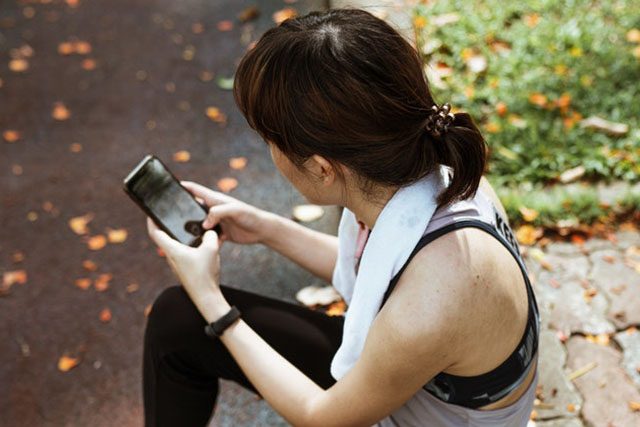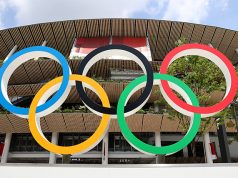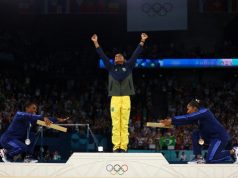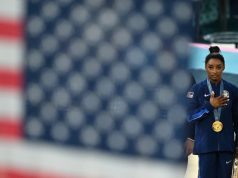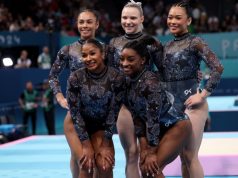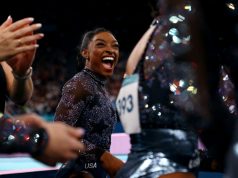Generation Z athletes (those born after 1996) have emerged in 2021 as global wellbeing leaders and advocates, challenging outdated ideas about what it takes to be an athlete. Many of these young sportspeople have gone beyond their sport and taken on roles of advocacy, sponsorship and politics. Through social media, they have opened up conversations about performance, mental health and the impact of the media.
Sports stars are making their voices heard across a range of different sporting arenas. They are doing this by shifting the power over the conversation and this is particularly facilitated by social media. These athletes are making it clear that, while they love their sports, their primary responsibility is their duty to themselves.
Two of the most prominent sportspeople to take a stand for themselves and their mental health this year were tennis player Naomi Osaka and gymnast Simone Biles.
Osaka has used social media to elevate issues around race. She has made it clear that “before [she is] an athlete, [she is] a Black Woman”. Biles has pointed to how having such a huge social media platform (she has 1.7 million followers on Twitter alone) stopped the governing body USA Gymnastics from turning a blind eye to sexual assault and harassment allegations against coaches and staff.
Both are leading advocates on key social issues: Osaka on Black Lives Matter and Biles as a survivor of sexual assault. As well as performing at the highest levels of their disciplines they are holding society to account. No wonder this takes a toll on their mental health.
The emergence of the athlete’s authentic voice during their career is new and growing. You might think that they always had access to a platform to speak through traditional sports media but this was always sanitized, often limited to interviews that sought to capture the immediacy of a performance. Social media has expanded and accelerated a properly authentic voice that is also more personal and openly political.
The athlete’s voice
These Gen Z players, born into or at the cusp of the social media boom, can connect directly with their millions of followers on Instagram, Twitter and TikTok to share personal insights. In doing so, they are bypassing the more traditional communication channels, highlighting how the balance of power is shifting away from traditional sports journalists to the sportspeople themselves.
It is unusual for active athletes to be so transparent about their health—particularly, their mental health. At the Tokyo Olympics, Biles made a rare exception. She used social media to explain an attack of the “Twisties” and the impact on her performance and mental health. This disrupted the narrative of victory at all costs.
It’s in an athlete’s interest to minimize their opposition’s understanding of their injuries or “weaknesses.” Typically, sports fans must wait for the “tell-all” book or autobiography that articulates an athlete’s previous struggles with injury, doubt and mental health. For example, tennis player Pete Sampras only revealed he had a thalassemia condition (which can make people tired and short of breath) in his book A Champion’s Mind. Similarly, tennis player Andre Agassi’s confessed to drug-taking in his book, Open.
Our research suggests that social media has undermined the need for this post-career reveal. Sportspeople can construct their own narratives and control their stories as they go along. It represents the perfect sports autobiography for the digital age.
Social media vs legacy media
Sports journalism has become an integral part of communicating the lives and experiences of athletes. The relationship between athletes and the press has developed over time, with athletes typically contracted to participate in press commitments. These press commitments are required by sponsors and tournaments alike and are used to promote people, brands and events.
We are seeing an evolution of this relationship, which disrupts existing power systems. In 2021, Osaka’s actions at the French Open challenged the relationship between sport and the media. She initially used her social media channels to announce she wouldn’t be participating in press conferences during the tournament. Later, after being threatened with expulsion, she again took to social media to withdraw and highlight her depression and struggles with mental health.
I’m here for a good time. pic.twitter.com/P10GyUAJt5
— NaomiOsaka大坂なおみ (@naomiosaka) July 26, 2021
Osaka’s social media interventions were followed up by her Time magazine interview, which stressed the need for change. Her immediate focus was to remove the unnecessary burden of particular press duties, especially the press conference, to protect athletes’ mental health. Osaka’s high profile interventions are likely to bring change which, coupled with better training for athletes on the use and regulation of social media, will be more useful and effective than dealing with the mental health aftereffects when things go wrong.
The social media backlash against some of these Gen Z athletes highlights a generational clash, exposing the relationship between sports and mental health, as well as traditional and new media. Athletes have led the way in exposing the power imbalance. Now, the exchanges between the public, press and athletes are becoming more equal.
By taking control of their own stories, these athletes have broken the idea that top sports stars—with their extreme athleticism, dedication and seemingly invincibility—are somehow superhuman. Elite athletes carry enormous burdens of responsibility and winning doesn’t come before everything else. As Simone Biles made clear: “We are not just entertainment, we are human.”
, Professor of Intellectual Property and Innovation Law and Co-Director of the Jean Monet Centre of Excellence for European Intellectual Property and Information Rights, Bournemouth University; , Senior Academic in Sociology of Sport, Bournemouth University; , Head of Department of Humanities and Law, Bournemouth University.
This article is republished from The Conversation under a Creative Commons license. Read the original article.

